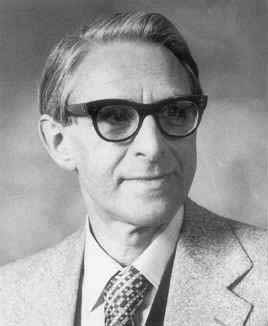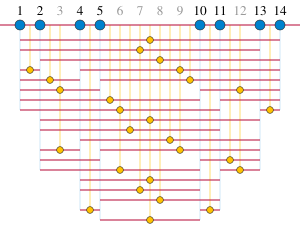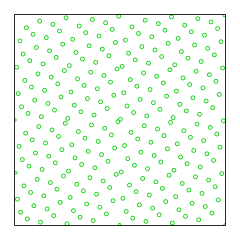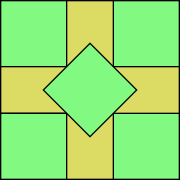Klaus Roth facts for kids
Quick facts for kids
Klaus Roth
|
|
|---|---|
 |
|
| Born |
Klaus Friedrich Roth
29 October 1925 Breslau, Province of Lower Silesia, Weimar Germany
|
| Died | 10 November 2015 (aged 90) Inverness, Scotland
|
| Education |
|
| Known for |
|
| Awards |
|
| Scientific career | |
| Fields | Mathematics |
| Institutions | |
| Thesis | Proof that almost all Positive Integers are Sums of a Square, a Positive Cube and a Fourth Power (1950) |
| Doctoral advisor | Theodor Estermann |
| Other academic advisors | |
Klaus Friedrich Roth (born October 29, 1925 – died November 10, 2015) was a famous British mathematician. He was born in Germany but moved to England when he was a child. He won the Fields Medal, which is like the Nobel Prize for mathematicians, for his important work on how to approximate numbers. He also received other major awards like the De Morgan Medal and the Sylvester Medal.
Roth moved to England in 1933 to escape the Nazis. He studied at the University of Cambridge and University College London, finishing his advanced degree in 1950. He taught at University College London for many years before moving to Imperial College London in 1966. He retired in 1988.
Besides his work on approximating numbers, Roth also made big contributions to other areas of mathematics. These included studying sets of numbers that don't have certain patterns and how numbers are spread out. He also researched topics like sums of powers and how to pack squares. He even co-wrote a book called Sequences about lists of numbers.
Contents
About Klaus Roth
His Early Life
Klaus Roth was born in Breslau, Prussia (which is now Wrocław, Poland) on October 29, 1925. His family was Jewish, and they moved to London in 1933 to escape the Nazis. Klaus grew up and went to school in the United Kingdom. His father, who was a lawyer, died when Klaus was young.
From 1939 to 1943, Klaus went to St Paul's School, London. During The Blitz, when London was bombed, the school moved out of the city for safety. At school, Klaus was known for being very good at both chess and mathematics. He tried to join the Air Training Corps, but he was not allowed for a few years because he was German. Later, he was blocked because he lacked the coordination needed to be a pilot.
His Math Studies
Klaus Roth studied mathematics at Peterhouse, Cambridge, and finished in 1945. He was so good at chess that he played on the first board for the Cambridge chess team.
Even though he was very skilled in math, he only got a "third-class honours" degree. This was because he wasn't very good at taking tests. His tutor at Cambridge, John Charles Burkill, even suggested he should get a business job instead of continuing in math.
But Klaus didn't give up on math. He briefly taught at a school called Gordonstoun before starting his advanced studies. In 1946, he was accepted into a master's program at University College London. There, he worked with Theodor Estermann. He earned his master's degree in 1948 and his doctorate (a very high degree) in 1950. His doctorate paper was about how many numbers can be made by adding a square, a cube, and a fourth power.
His Career as a Mathematician
After getting his master's degree in 1948, Roth became an assistant lecturer at University College London. In 1950, he became a lecturer. His most important discoveries were published in the mid-1950s. These included his work on approximating numbers, special number sequences, and how numbers are spread out.
In 1958, he received the Fields Medal, which is the highest award a mathematician can get. However, he wasn't promoted to full professor until 1961. During this time, he worked closely with another mathematician named Harold Davenport.
Roth spent time at the Massachusetts Institute of Technology in the United States in the 1950s and 1960s. He even thought about moving there permanently. But British mathematicians convinced him to stay by offering him a special teaching position at Imperial College London. He accepted this job in 1966 and stayed there until he officially retired in 1988. He continued to be a visiting professor at Imperial College until 1996.
Roth's lectures were usually very clear, but sometimes they could be a bit unpredictable. He only had two doctoral students, but one of them, William Chen, became a very successful mathematician himself.
His Personal Life
In 1955, Klaus Roth married Mélèk Khaïry. She had been a student in one of his first lectures. Mélèk was the daughter of an Egyptian senator. She worked in the psychology department at University College London and did research on how certain substances affected rats.
When Roth retired, he and Mélèk moved to Inverness, Scotland. They both loved Latin dancing, and Roth even set aside a room in their house just for it! Mélèk passed away in 2002, and Klaus died in Inverness on November 10, 2015, at the age of 90.
They did not have any children. Roth left most of his money, over a million pounds, to two health charities in Inverness to help elderly and sick people. He also sent his Fields Medal to Peterhouse, his old college.
Klaus Roth's Discoveries
Roth was known for solving tough math problems, rather than building new theories. Harold Davenport once said that Roth's work showed that "the great unsolved problems of mathematics may still yield to direct attack." Roth's research covered several areas of number theory, which is the study of numbers.
Approximating Numbers
Diophantine approximation is a field of math that looks for ways to find very close fractions that are almost equal to irrational numbers (numbers that can't be written as simple fractions, like Pi). Mathematicians wanted to know how well algebraic numbers (numbers that are solutions to certain equations) could be approximated.
In 1955, Roth published what is now called Roth's theorem. This theorem completely answered the question. He proved that for irrational algebraic numbers, the best way to approximate them is always the same. This was a very important discovery. When Roth received the Fields Medal in 1958, Harold Davenport called this result Roth's "greatest achievement."
Number Patterns
Another important result by Roth, from 1953, is also called "Roth's theorem." This one is about integer sequences (lists of numbers) that don't have three numbers in a row that form an arithmetic progression (like 2, 4, 6 or 5, 10, 15).
Earlier, mathematicians Paul Erdős and Pál Turán thought that these kinds of sequences must be "sparse," meaning they don't have many numbers. Roth proved that if a set of integers is "dense" (meaning it has a lot of numbers), then it *must* contain a three-term arithmetic progression. His proof used advanced math techniques to show that if there are enough numbers, you'll always find this pattern.
Other mathematicians later built on Roth's work. A famous result called Szemerédi's theorem shows that dense sets of integers contain even longer arithmetic progressions.
How Numbers Are Spread Out
Even though his work on approximating numbers brought him the most fame, Roth was most proud of his research on how numbers are spread out, also known as discrepancy theory. His 1954 paper on this topic started a whole new area of study. It looks at how to place points in a square so that they are spread out as evenly as possible.
Roth measured how well these points were spread out. He proved that for a randomly chosen area within the square, the difference between the actual number of points and the expected number of points would be very small. This was a big improvement over previous work. Roth was known for saying that this result "started a subject."
Other Math Interests
Some of Roth's earliest work included a 1949 paper about sums of powers. He showed that almost all positive integers could be written as the sum of a square, a cube, and a fourth power. In 1951, he published a paper about the gaps between squarefree numbers (numbers that are not divisible by any perfect square other than 1). This work was considered very important.
Roth also studied the large sieve, which is a way to count sets of integers where certain numbers are not allowed. He published a paper on this problem in 1965.
Another problem Roth was interested in was the Heilbronn triangle problem. This problem asks how to place points in a square so that no three points form a very small triangle. His 1951 paper was the first to find a good upper limit for how small the area could be. He wrote four papers on this problem.
Roth also made important progress on square packing in a square. This is about how efficiently you can fit smaller squares into a larger square. He and Bob Vaughan showed in 1978 that even with clever ways of packing, some empty space will always be left.
In 1966, Klaus Roth and Heini Halberstam published their book Sequences. This book covered many topics about lists of numbers, including how dense they are and how many ways numbers can be made by adding members of the sequences. A second edition of the book was published in 1983.
Awards and Honors

Klaus Roth won the Fields Medal in 1958 for his groundbreaking work on approximating numbers. He was the first British mathematician to win this prestigious award.
He was also chosen as a Fellow of the Royal Society in 1960. This is a very old and respected group of scientists. Later, he became an Honorary Fellow of other important groups like the Royal Society of Edinburgh and his old colleges, University College London, Imperial College London, and Peterhouse. He found it amusing that he received his Fields Medal, election to the Royal Society, and professorship in the opposite order of how important they were.
The London Mathematical Society gave Roth the De Morgan Medal in 1983. In 1991, the Royal Society gave him their Sylvester Medal for his many contributions to number theory, especially for solving the problem of approximating algebraic numbers.
In 2009, a special collection of 32 essays was published in honor of Roth's 80th birthday. These essays were about topics related to his research. In 2017, the journal Mathematika dedicated a special issue to him after his death. Imperial College London also created the Roth Scholarship to honor him.
Selected Publications
Journal Papers
- Roth, K. F. (1949). Proof that almost all positive integers are sums of a square, a positive cube and a fourth power. Journal of the London Mathematical Society, 24(1), 4–13.
- Roth, K. F. (1951). On a problem of Heilbronn. Journal of the London Mathematical Society, 26(3), 198–204.
- Roth, K. F. (1951). On the gaps between squarefree numbers. Journal of the London Mathematical Society, 26(4), 263–268.
- Roth, K. F. (1953). On certain sets of integers. Journal of the London Mathematical Society, 28(1), 104–109.
- Roth, K. F. (1954). On irregularities of distribution. Mathematika, 1(2), 73–79.
- Roth, K. F. (1955). Rational approximations to algebraic numbers. Mathematika, 2, 1–20, 168.
- Roth, K. F. (1965). On the large sieves of Linnik and Rényi. Mathematika, 12, 1–9.
- Roth, K. F. (1976). Developments in Heilbronn's triangle problem. Advances in Mathematics, 22(3), 364–385.
- Roth, K. F., & Vaughan, R. C. (1978). Inefficiency in packing squares with unit squares. Journal of Combinatorial Theory, Series A, 24(2), 170–186.
Book
- Halberstam, H., & Roth, K. F. (1966). Sequences. Clarendon Press. (A second edition was published in 1983 by Springer-Verlag.)
See also
 In Spanish: Klaus Roth para niños
In Spanish: Klaus Roth para niños




